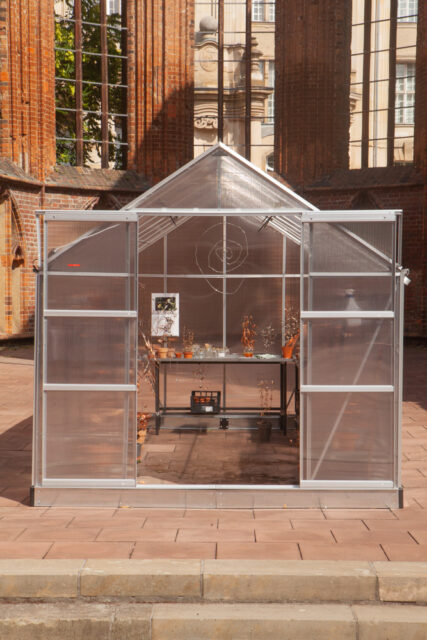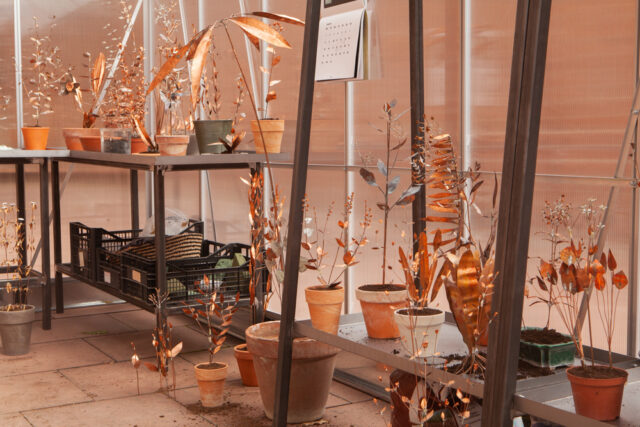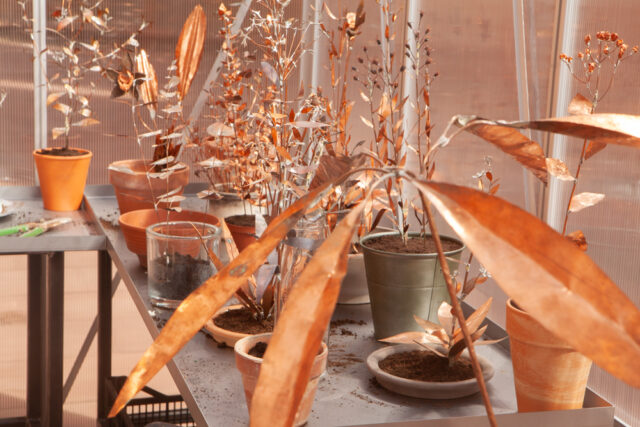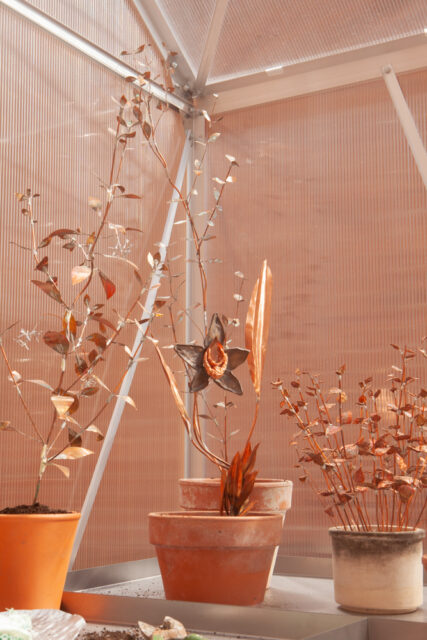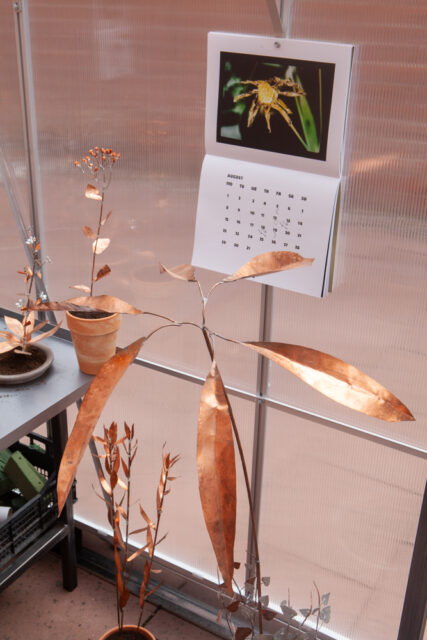Vivero Enredado
José Montealegre
Exhibition
20 Aug – 19 Sep 2021 Opening 19 Aug 19:00 Free Admission
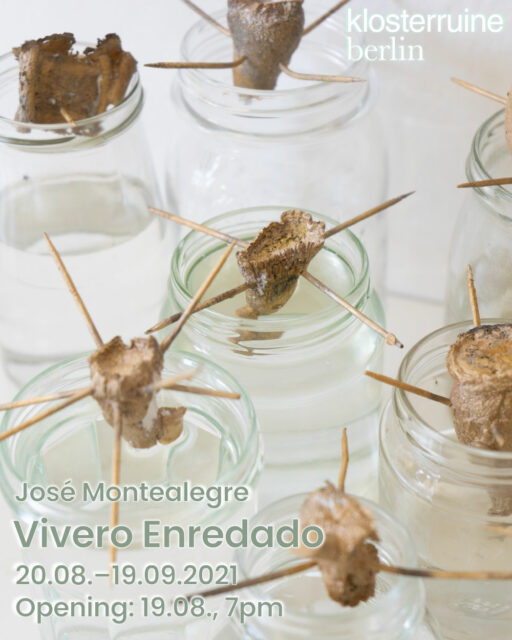
José Montealegre’s installation consists of a greenhouse, stocked with copper, bronze and tin sculptures depicting plants and seeds modeled after scientific drawings as they appear in the 17th century publication titled Nova plantarum, animalium et mineralium Mexicanorum historia. The encyclopedia is the result of a seven-year expedition led by the Spanish proto-medic Francisco Hernández de Toledo that sought to document the flora and fauna of the “new world”. Commissioned by King Philip II of Spain in 1570, Hernández de Toledo was tasked with finding plants that could serve medical, scientific or economic purposes in the Western world. Yet the resulting archive, with invaluable input from local doctors and three Náhua painters re-baptized under the names of Antón, Balthazar Elías and Pedro Vásquez, ended up being too complicated and involved for the likes of the King. This document is paradigmatic for the violent and ongoing logic of destruction and appropriation of the Americas. Instead of restricting himself to a reconstruction of the historical conditions of colonial knowledge regimes, Montealegre is interested in the spectral afterlife of this knowledge that through a process of continuous appropriation, translation and reproduction, opens itself up to fiction and speculation. Of course, this structural openness is usually left unacknowledged, making the possibility for artistic intervention so much more meaningful.
In “Vivero Enredado” (in translation, “Entangled Greenhouse”), Montealegre takes the historical drawings and artificially reanimates them. While slowly oxidizing over the duration of the show and thus changing colors, these plants figure as the undead, ever-ripe and blossoming offspring of the original plants. While an anthropocentric perspective in Western history rarely manages to grasp the historical dimension of plants, these copper relatives stand in as their historical ambassadors. They convey the messages of all those that have been rendered an image, exotized and dematerialized versions of themselves or of something else entirely, forever stuck in an ahistorical and so-called “ethnographic present”(1). Accordingly, Montealegre’s installation inhabits a time and space out of joint. Calendars that are hung outside the greenhouse seem to collapse the four weeks of the exhibition into a year, pointing towards the speculative nature of linear, chronological time. In the artificial climate of the greenhouse, as the real water condenses on the fake glass, the differences between what’s dead or alive, what’s real or fictional, what’s past and what’s present become strategically obfuscated. Thinking through colonial and neo-colonial systems of oppression, the philosopher Achille Mbembe has described a power that no longer controls life but death. With this shift in mind, Montealegre’s intricate metallic organisms appear as survivors, though neither alive or dead they are both and more, their growth a testament to a poetical spirit of resistance.
–––––––
(1) The concept of the “ethnographic present” critiques the convention in traditional ethnographic fieldwork of presenting research exclusively in the present tense. This makes the field appear ahistorical: stuck in an eternal, phantasmagorical present.
Curated by Christopher Weickenmeier
Funded by the Department for Art, Culture and History, District Mitte of Berlin, Senate Department for Europe and Culture, the Bezirkskulturfonds, the Hans and Charlotte Krull Stiftung, Galerie MOUNTAINS and the Hessische Kulturstiftung.
